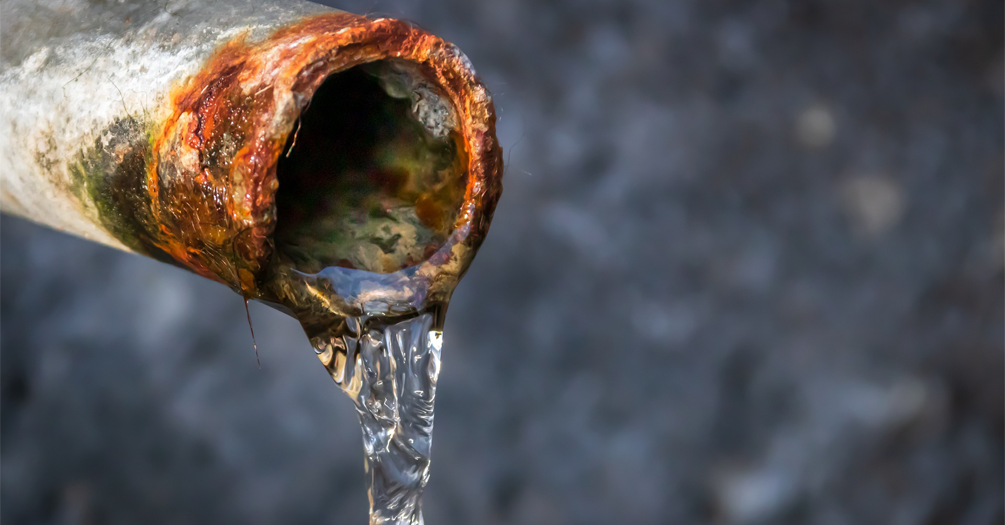Clean drinking water is a fundamental necessity for life, but the presence of lead in it can pose significant health risks to consumers. Considerable progress has been made to reduce lead exposure over the years; however, it remains an insidious threat, particularly with aging infrastructure. In this article, we review possible channels of lead contamination in drinking water, dangers of ingestion, safe levels, and detection.
How Lead Enters Drinking Water
Lead can enter drinking water via several pathways, with the predominant being from corrosion of plumbing materials. In the early 1900s, several large cities in America installed lead water pipes due to their long-term durability. Although there are ongoing efforts to phase them out, they already constitute a significant amount of old service lines across the U.S.. According to the U.S. Environmental Protection Agency (EPA), there are still 6 to 10 million lead service lines across the country. As these lines corrode, lead particles leach into the drinking water, especially when water sits stagnant for extended periods. This constitutes the largest source of contamination from plumbing materials. Apart from service lines, other sources of lead contamination include:
- Lead-soldered joints in water pipe systems.
- Plumbing fixtures such as faucets and valves.
Industrial activities, such as mining and manufacturing, also contribute to lead pollution in water sources. Effluents from these processes can contaminate nearby water bodies, thereby increasing lead exposure in communities.
Health Risks of Lead in Drinking Water
Lead is a powerful neurotoxin, which means exposure to it could damage the brain. It has an adverse effect on the health of both children and adults.
Dangers of Lead to Children
Although exposure to lead affects all children, young children and infants are the most prone. This is because their brains and bodies are quickly developing, so they tend to absorb lead quicker than older children. Even low levels of lead in the blood of children can result in the following:
- Anemia.
- Slowed growth.
- Hearing problems.
- Behavior and learning problems.
- Lower IQ and hyperactivity.
In rare cases, ingestion of lead results in seizures, coma, and even death.
Dangers of Lead to Pregnant Women
Lead can accumulate in human bodies over time because it is stored in bones and calcium. During pregnancy, this lead is released from the bones to help the fetus form bone if a woman has insufficient dietary calcium. Lead can also cross the placental barrier to the fetus and can be transferred via breast milk to an infant. Its impact on the mother and child include:
- Reduction in the growth of the fetus.
- Premature birth.
- Miscarriage.
- Development disorders.
- Infertility.
Dangers of Lead to Adults
Apart from pregnant women, lead in drinking water poses a threat to all adults, as exposure can result in:
- Reproductive problems in both males and females.
- Decrease in kidney function.
- Cardiovascular effects include an increase in blood pressure and the incidence of hypertension.
Safe Levels of Lead
Generally, regulatory bodies such as the EPA and CDC set a maximum contaminant level (MCL) for most contaminants. But, because lead, even at very small amounts in the blood, poses several health risks, there is no known safe level. As a result, the EPA established a treatment technique for lead (Lead and Copper Rule) rather than an MCL. This regulation requires the collection of tap samples from sites served by a water system that is likely to have plumbing materials containing lead. If more than 10% of samples exceed 15 ppb of lead, then water systems require additional actions such as:
- Further optimization of corrosion control treatment.
- Educating the public about lead in drinking water and possible actions consumers can take to minimize exposure.
- Replacing the portions of service lines containing lead.
Smart Detection of Lead Contamination
Early contamination detection using testing equipment is essential because you cannot see, taste, or smell lead in drinking water. Traditional testing methods involve collecting water samples and sending them to laboratories for analysis. This is not only expensive but can also be time-consuming. Advancements in technology have resulted in the development of faster and more accessible methods such as the ANDalyze sensor technology.
ANDalyze Sensor
ANDalyze is a proprietary catalytic DNA sensor developed by Alpha Measurement Solutions for detecting lead and other heavy metals. It works by generating fluorescence due to DNAzyme reaction in the presence of a target heavy metal. The fluorescence is measured by the fluorometer, and the concentration of the heavy metal is reported in trace levels. Compared with mainstream technologies, ANDalyze can use on-site measurements to reduce time, cost, and effort. This technology is useful for a wide variety of parameters, as the table below shows.
| Sensor | Detectable Range (Dilution Available) | Part Number | Accuracy |
| Lead | 2 – 100 ppb | AND010 | Greater of 15% or 2 ppb |
| Uranium | 2 – 60 ppb | AND011 | Greater of 15% or 2 ppb |
| Copper | 0.1 – 2 ppm | AND017 | Greater of 15% or 0.05 ppm |
| Mercury | Pass/Fail at 2 ppb (up to 50 ppb) | AND014 | N/A |
| Zinc | 1 – 15 ppm | AND015 | Greater of 15% or 0.1 ppm |
| Cadmium | 0.1 – 1.0 ppm | AND016 | Greater of 15% or 0.1 ppM |
Using this device is simple, as no harmful reagents or special disposal requirements exist. When testing for lead in drinking water, you can inject 1 milliliter water sample through the sensor. Then, have the results in less than one minute at a fraction of the cost and time of other methods.





